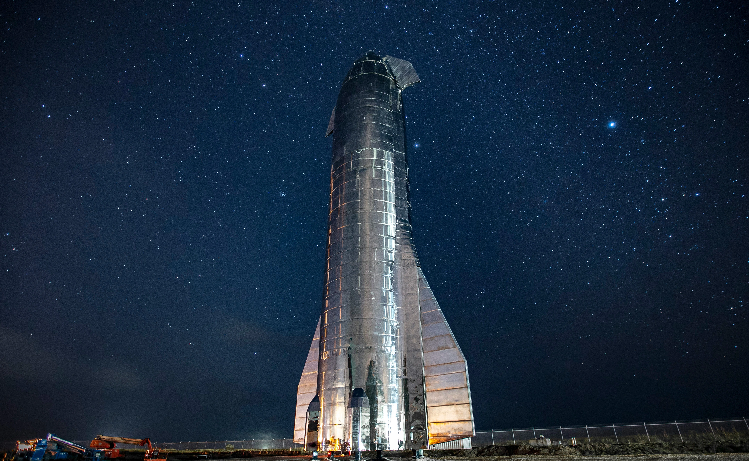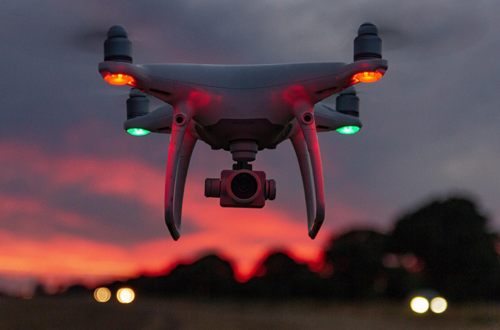-
SpaceX Seeks to Deploy Ruggedized Starlink Satellite Dish for Buildings
 The firm is already developing a high-performance ruggedized satellite dish for automobiles, boats, and planes. It now wants to use it for enterprise customers with fixed locations as well.
The firm is already developing a high-performance ruggedized satellite dish for automobiles, boats, and planes. It now wants to use it for enterprise customers with fixed locations as well.As reported in PC Mag, SpaceX has filed an application for a new ‘ruggedized’ Starlink dish for buildings that promises to withstand bigger temperature swings. The company says the dish will be built with “features that ruggedize the unit for use in harsh environments”. The company’s application to the FCC requests approval to operate the dishes across the US, including Alaska, Hawaii, Puerto Rico, and the US Virgin Islands.
- SpaceX Seeks to Deploy Ruggedized Starlink Satellite Dish for BuildingsThe company is already working on a high-performance ‘ruggedized’ satellite dish for cars, boats, and planes.
- Now it wants to use it for ‘fixed location’ enterprise customers, too.
- For perspective, the current Starlink dishes for consumers can operate in temperatures from -22 degrees Fahrenheit to +122 degrees Fahrenheit.
- Some HP terminals will be deployed in Occupational/Controlled Environments, especially for enterprise customers.
- The company’s application to the FCC requests approval to operate the new dishes across the US, including in Alaska, Hawaii, Puerto Rico, and the US Virgin Islands.
Is SpaceX Working On A Ruggedized Version Of Its Starlink Dish?

SpaceX is developing a ruggedized version of its Starlink dish that can be used outside of cars, boats, and planes, as well as in hostile environments. On Tuesday, SpaceX applied to the FCC to operate the so-called high-performance Starlink dish.
SpaceX’s Starlink dish is already designed to withstand both freezing and scorching temperatures. However, the business is now seeking FCC clearance for a new high-performance Starlink dish for buildings that can survive even greater temperature changes.
SpaceX filed an application on Friday for the HP type Starlink dish, which has “features that ruggedize the unit for operation in difficult settings,” according to the company.
Liftoff! pic.twitter.com/aZ2vu9BOba
— SpaceX (@SpaceX) January 19, 2022The company stated that granting this application would benefit the public by authorizing a new class of ground-based components for SpaceX’s satellite system that will enhance the range of internet service capabilities available throughout the United States, especially in challenging environments where ruggedization is appropriate.
SpaceX filed a similar application in August for a ruggedized Starlink dish that can deliver high-speed internet in harsh situations. The proposal, which is still awaiting FCC approval, only asked for the devices to be operated on moving vehicles like planes, boats, and cars.
Is Starlink Working on a Next-generation Dish?
Other FCC applications from the company have also indicated the company is working on another next-generation Starlink dish that will use a smaller antenna than the current model.
A ruggedized dish would be good news for anyone worried about their Starlink dish breaking in extremely hot or cold wintry weather. But it remains unclear how much the dish would cost when the current model goes for $499.
On the other hand, Friday’s proposal asks for permission to use the ruggedized Starlink dishes as fixed Earth stations, which means they’d be positioned outside a structure as permanent equipment.
To put things in perspective, the existing Starlink consumer dishes can operate in temperatures ranging from -22 to +122 degrees Fahrenheit. Any snow that falls on the dish might also be melted by the equipment.
The next high-performance dish is expected to push climate resilience to new heights.
“In comparison to other user terminals SpaceX Services has been authorized to deploy, the HP model has been ruggedized to handle harsher environments,” according to the company. “For example, it will be able to continue cooperating at greater extremes of heat and cold will have improved snow/ice melt capabilities, and will withstand a greater number of thermal cycles.”
The dish will also be targeted at enterprise buyers, such as corporations or research facilities, according to the company.
“Some HP terminals, particularly for enterprise customers, will be implemented in Occupational/Controlled Environments. Furthermore, numerous installations will be created in regions that are off-limits to the general public.
In an addendum to its application, they state that “certain HP terminals will likely be deployed in General Population/Uncontrolled Environments as well.”
The attachment adds that the company plans on installing the ruggedized dishes at customer premises using only qualified personnel. SpaceX’s application to the FCC requests approval to operate the new dishes across the US, including in Alaska, Hawaii, Puerto Rico, and the US Virgin Islands.
For more tech articles, reviews, advice, and news read Jafworks.com




